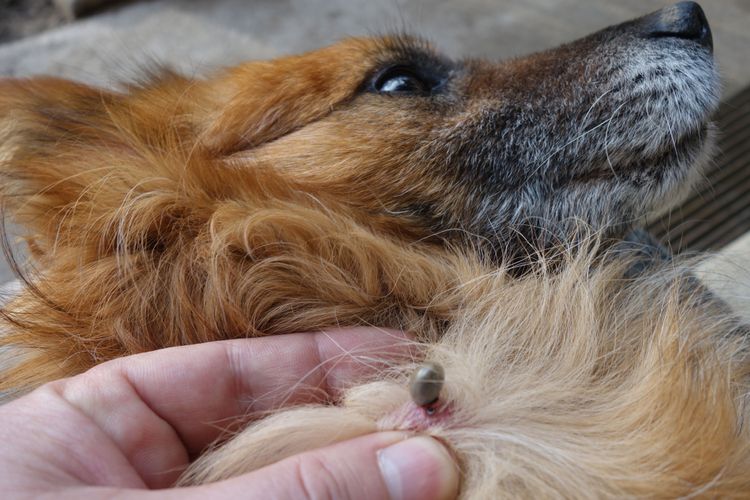Lyme disease in dogs - symptoms & treatment
Protection against ticks is important for humans and pets. At the beginning of the tick season, there are warnings in the media about the danger of ticks. Information material is available in every veterinary practice. How endangered is your dog really? Is it pure scaremongering or a real fact? Your dog can contract a dangerous pathogen at any time through a tick bite. The following diseases can be passed on to your dog by ticks:
- Lyme disease
- Anaplasmosis
- FSME
- Babesiosis
- Ehrlichiosis
In this article we inform you about Lyme disease in dogs. You can find detailed information about possible bacterial infectious diseases caused by a tick bite at Parasite Portal Link.
Basics and causes of Lyme disease
The borrelia (bacteria) are spiral-shaped and are located in the intestine of the tick. Once the tick has bitten and starts sucking the blood, the bacteria move from the intestine to the salivary gland and from there they enter your dog's bloodstream. This process takes some time. The period is between 16 and 24 hours.

In the northern part of Europe, about every third tick is a carrier of these bacteria. These pathogens are widespread, but there are regional differences. The risk of infection varies between 5 and 50 percent in tick areas.
Symptoms and diagnosis of Lyme disease
After a tick bite, the bacteria travel through the bloodstream to all areas of the dog's body. The bacterial infectious disease can spread to the joints, organs or nervous system. Most often, the dog's joints are affected.
Your dog's immune system is late to respond to these "invaders". Possible signs of Lyme disease may appear after four to six weeks:
- Mattness
- Loss of appetite
- Fever up to 40.5 °C
A circular reddening of the skin around the injection site is usually absent in the dog or cannot be diagnosed through the fur. If your dog's immune system is not able to cope with these pathogens, there will be another bout of the disease. Fatally this can occur only after weeks or months.
Painful joint inflammation occurs during this phase. Your dog is lame. This discomfort occurs after standing up and in different places. This alternating lameness involves the front and back legs. In addition to these signs, your dog suffers from:
- Fever spikes
- Loss of appetite
- Muscle pain
In rare and particularly severe cases, the heart or kidneys can be damaged. Kidney damage can escalate to kidney failure with a fatal outcome.
Therapy and prevention for Lyme disease
As with any bacterial infectious disease, treatment should or must be given as soon as possible. Due to the sometimes unclear symptoms, you should bring your dog to the veterinary practice at the slightest suspicion. There the suspicion can be confirmed with a quick test or be put "ad acta" as unfounded.
If the result is positive, treatment with an antibiotic will begin. This usually has to be given to your dog for four weeks. A complete cure can possibly be achieved with
- creeping disease
- advanced disease
not always be achieved. This could cause your dog to suffer from late symptoms or chronic complaints in the future.
Against the most dangerous borreliosis pathogens for your dog
- Borrelia burgdorferi sensu stricto
- Borrelia afzelii
- Borrelia garinii
there is a vaccination protection.
In addition, you should protect your dog with a tick repellent (spot-on, tick collar). These means can not ensure with 100% that your quadruped is not bitten by individual ticks. With "water rats" and long-haired large dogs the protection can be additionally somewhat reduced.
Supplement this protection by daily scanning of the dog's body. Especially the head (ears, muzzle) and chest can be affected when sniffing in tall grass. This routine after walking will give you peace of mind and your dog will love this ritual. Carefully remove any tick found by hand (tick tongs). Don't panic. Infection does not occur for several hours after a tick bite.






































